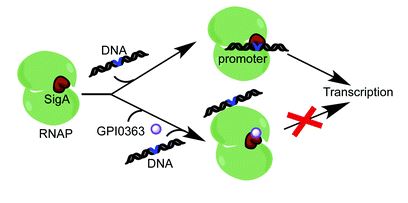Looking back at 2019, we would like to highlight some of the great research that has been published in RSC Advances over the year. We are proud to present a selection of the most popular 2019 articles published on drug delivery so far.
We hope you enjoy reading these articles – free to read and accessible to everyone.
Happy New Year from the RSC Advances team!
Carbon quantum dots and their biomedical and therapeutic applications: a review
Mohammad Jafar Molaei
RSC Adv., 2019,9, 6460-6481. DOI: 10.1039/c8ra08088g
Review
Microfluidic assisted synthesis of PLGA drug delivery systems
Sima Rezvantalab and Mostafa Keshavarz Moraveji
RSC Adv., 2019,9, 2055-2072. DOI: 10.1039/c8ra08972h
Review
Growing prospects of DNA nanomaterials in novel biomedical applications
Zhiguang Suo, Jingqi Chen, Xialing Hou, Ziheng Hu, Feifei Xing and Lingyan Feng
RSC Adv., 2019,9, 16479-16491. DOI: 10.1039/c9ra01261c
Review
Preparation and applications of peptide-based injectable hydrogels
Chang Liu, Qingguo Zhang, Song Zhu, Hong Liu and Jie Chen
RSC Adv., 2019,9, 28299-28311. DOI: 10.1039/c9ra05934b
Review
Cholesterol-coated gold nanorods as an efficient nano-carrier for chemotherapeutic delivery and potential treatment of breast cancer: in vitro studies using the MCF-7 cell line
Nouf N. Mahmoud, Dima A. Sabbah, Rana Abu-Dahab, Duaa Abuarqoub, Maha Abdallah, Ameerah (Hasan Ibrahim) and Enam A. Khalil
RSC Adv., 2019,9, 12718-12731. DOI: 10.1039/c9ra01041f
A chemotherapeutic approach targeting the acidic tumor microenvironment: combination of a proton pump inhibitor and paclitaxel for statistically optimized nanotherapeutics
Saswati Bhattacharya, Jasmina Khanam, Pradipta Sarkar and Tapan Kumar Pal
RSC Adv., 2019,9, 240-254. DOI: 10.1039/c8ra08924h
Enzymatic synthesis of selenium-containing amphiphilic aliphatic polycarbonate as an oxidation-responsive drug delivery vehicle
Xian-Ling Yang, Xiu Xing, Jun Li, Yan-Hong Liu, Na Wang and Xiao-Qi Yu
RSC Adv., 2019,9, 6003-6010. DOI: 10.1039/c8ra10282a
Non-thermal plasma assisted surface nano-textured carboxymethyl guar gum/chitosan hydrogels for biomedical applications
Ganeswar Dalei, Subhraseema Das and Smruti Prava Das
RSC Adv., 2019,9, 1705-1716. DOI: 10.1039/c8ra09161g
Thermoresponsive 2-hydroxy-3-isopropoxypropyl hydroxyethyl cellulose with tunable LCST for drug delivery
Ye Tian, Ying Liu, Benzhi Ju, Xiaozhong Ren and Mingyun Dai
RSC Adv., 2019,9, 2268-2276. DOI: 10.1039/c8ra09075k
A green approach to obtain stable and hydrophilic cellulose-based electrospun nanofibrous substrates for sustained release of therapeutic molecules
Manja Kurečič, Tamilselvan Mohan, Natalija Virant, Uroš Maver, Janja Stergar, Lidija Gradišnik, Karin Stana Kleinschek and Silvo Hribernik
RSC Adv., 2019,9, 21288-21301. DOI: 10.1039/c9ra03399h
Tetracycline hydrochloride loaded citric acid functionalized chitosan hydrogel for wound healing
Hao Chen, Biyun Li, Bei Feng, Hao Wang, Huihua Yuan and Zhiwei Xu
RSC Adv., 2019,9, 19523-19530. DOI: 10.1039/c9ra02628b
Peptide-functionalized NaGdF4 nanoparticles for tumor-targeted magnetic resonance imaging and effective therapy
Yixin Chen, Yu Fu, Xiaodong Li, Hongda Chen, Zhenxin Wang and Huimao Zhang
RSC Adv., 2019,9, 17093-17100. DOI: 10.1039/c9ra02135c
Converse transitions between the micelles and the vesicles of pyrrolidone-based AIE amphiphilic copolymers in polar and apolar solvents
Xiaolong He, Beibei Wang, Xuefeng Li and Jinfeng Dong
RSC Adv., 2019,9, 28102-28111. DOI: 10.1039/c9ra05997k
An erythrocyte membrane coated mimetic nano-platform for chemo-phototherapy and multimodal imaging
Feng Xiao, Jialong Fan, Chunyi Tong, Chang Xiao, Zhou Wang, Bin Liu, Muhammad Daniyal and Wei Wang
RSC Adv., 2019,9, 27911-27926. DOI: 10.1039/c9ra05867b
MMP-responsive in situ forming hydrogel loaded with doxorubicin-encapsulated biodegradable micelles for local chemotherapy of oral squamous cell carcinoma
Wei Li, Cheng Tao, Jiexin Wang, Yuan Le and Jianjun Zhang
RSC Adv., 2019,9, 31264-31273. DOI: 10.1039/c9ra04343h

Submit to RSC Advances today! Check out our author guidelines for information on our article types or find out more about the advantages of publishing in a Royal Society of Chemistry journal.
Keep up to date with our latest HOT articles, Reviews, Collections & more by following us on Twitter. You can also keep informed by signing up to our E-Alerts.














